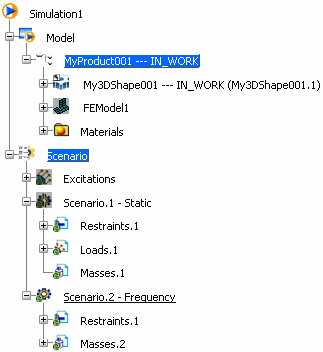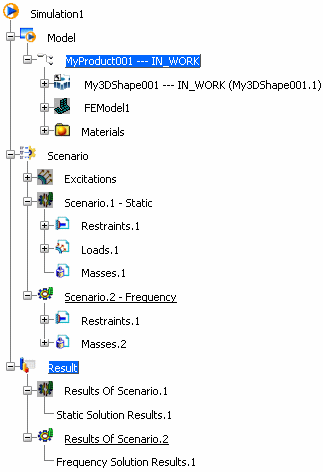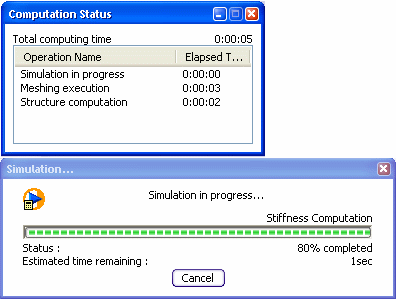Executing a Simulation from the Structural Analysis Workbench | |||
| |||
At the end of the computation:
- If an error is
detected during the computation, the Computation Incident Diagnosis dialog box appears to
let you understand, analyze, and solve the problem. The diagnosis appears in the specification tree under Results of Scenario and is stored with the simulation when you propagate the simulation. If you close the Computation Incident Diagnosis dialog box, you can click Scenario Incident Diagnosis
 to open it again, or you can double-click the diagnosis in the specification tree. See
Understanding Computation Incidents.
to open it again, or you can double-click the diagnosis in the specification tree. See
Understanding Computation Incidents. - If the computation is successful, the status of all the preprocessing
specifications is changed to valid in the specification tree, Result
appears in the specification tree if it is the first time you
simulate and generate results, and CATIA automatically switches to the
result workbench. You can now view the
structural analysis simulation results. The
 symbol appears on updated scenarios and scenario results.
symbol appears on updated scenarios and scenario results.
![]()
Example
If you simulate and generate the results for the two scenarios shown
bellow:
The results corresponding to the
two scenarios are generated and created in the specification tree:

 .
.